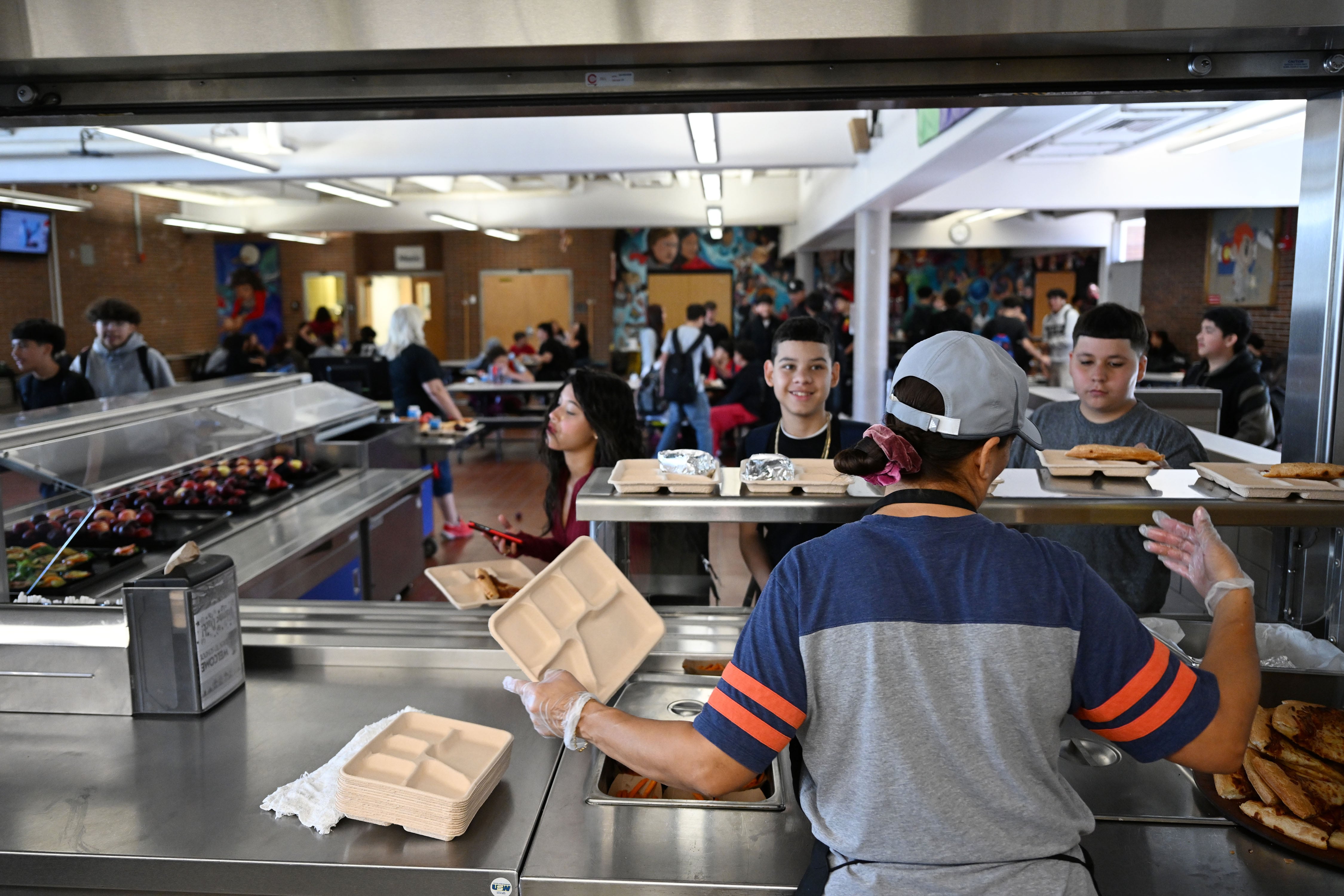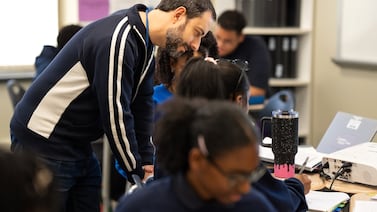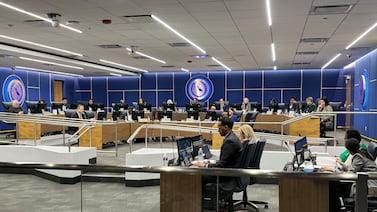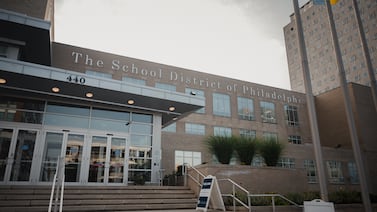Sign up for Chalkbeat Colorado’s free daily newsletter to get the latest reporting from us, plus curated news from other Colorado outlets, delivered to your inbox.
Azucena Rubio’s kids often complained about meals in their Jeffco schools.
Her elementary school daughter said the food was cold, sometimes frozen, and had no flavor. She often skipped lunch. Her son, now 16, left campus to buy snacks for lunch from the local gas station and was often late coming back to class.
So when she heard that the district was working with a group of parents on improving school meals, she joined in.
For the past two years, more than two dozen parents and district staff worked to think up new meals that might be healthier, and culturally responsive for the largely Latino population in Jeffco’s Edgewater schools on the western boundary near Denver.
This fall, the district has started serving 15 new recipes at three Edgewater schools, including some submitted by parents. Rubio, for instance, submitted a recipe for enchiladas and one for fried rice, which she got out of a nutrition book she uses in a health class she teaches.
Other new recipes include a chicken fajita bowl, pork carnitas tacos, and chicken and cheese quesadillas.
When the district first made the recipes for a parent taste test, the food was great, Rubio said. But now at schools, it hasn’t been consistently good, her kids report.
“It is getting better, I see they are trying, it’s progressing, slowly, but it is,” Rubio said. Her son is leaving campus much less often.
Parents submitted 27 recipes, then settled on the top 15. The district had to see which could be scaled up to make in large quantities, which could be tweaked to meet federal nutritional guidelines for school meals, and which were doable with the ingredients and kitchen equipment available to the district.
“It’s important to care for the health of our kids,” Rubio said. “If the food is all frozen and processed and not healthy, it can harm the health of our kids.”
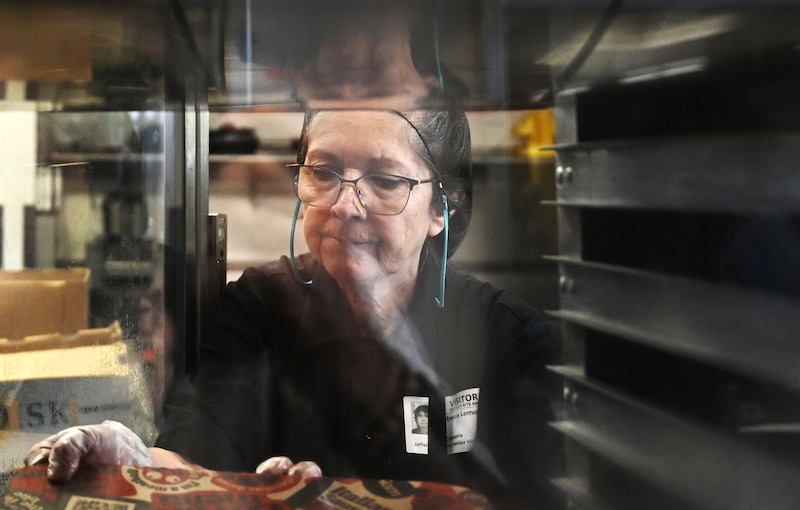
Logistical and communication challenges arise
District officials say their goal was not only to respond to the community, but also to explore ways to increase the amount of speed scratch cooking — a version of cooking from scratch that is simplified for school meals, and uses more fresh ingredients.
But throughout the time working with families to plan these meals, and even as the schools started testing some recipes last year, there have been challenges.
Some problems relate to communication between families and the school district. In the second half of last year, the district hired a facilitator to help run the meetings with families to improve the trust.
Many families believe that they weren’t being listened to and that the district was not opening up about why certain foods weren’t able to be served or why some kitchen equipment wasn’t being used. School nutrition officials worried that families didn’t understand the guidelines by which they had to operate.
Then there were some logistical challenges. The chicken bowl, for instance, was served with all the ingredients, such as cheese and lettuce, separate so kids who have allergies could still eat it. But that was a problem for younger children.
“Kids don’t know you need to put it all together, so they don’t know you’re making a chicken bowl,” said Tara Peña, Jeffco’s chief of family and community partnerships, who helped lead the pilot.
There are also questions about the cost.
Last year, meals were served as a test one day a week at the three schools — Edgewater Elementary, Lumberg Elementary, and Jefferson Junior/Senior High — but the district didn’t track the costs per meal. Combined, the three schools serve, on average, about 814 meals per day.
One potential cost is additional lunch staff. The three pilot schools have one additional staff member compared to other schools serving a similar number of meals per day.
Another potentially expensive problem in expanding is space – some school kitchens have more room to cook speed scratch meals than others. The district has a makeshift central kitchen, but it’s not large enough to accommodate cooking for all district schools.
“It does lead to some inconsistencies in the type of scratch cooking we can do for some students vs others,” Superintendent Tracy Dorland told the school board last month. Building a large central kitchen, as other districts are doing, might be the answer, she said, but it would be costly.
Jeffco Board members who received an update on the pilot also asked about sustainability and whether the plan is to expand to other schools.
“How do you scale the concept of culturally sensitive?” asked board member Danielle Varda. “The meals you’re making now may not be appealing to parents and families in lots of other schools, so like where do we scale what we’re doing in these three schools and do we have to adapt culturally sensitive approaches everywhere?”
District leaders said that they’re still working through the answer.
“It was a call to action for that community and you’re absolutely right it might not be appropriate to apply or assume that what this community needs and wants for their children and families is appropriate or needed in another community,” Peña said.
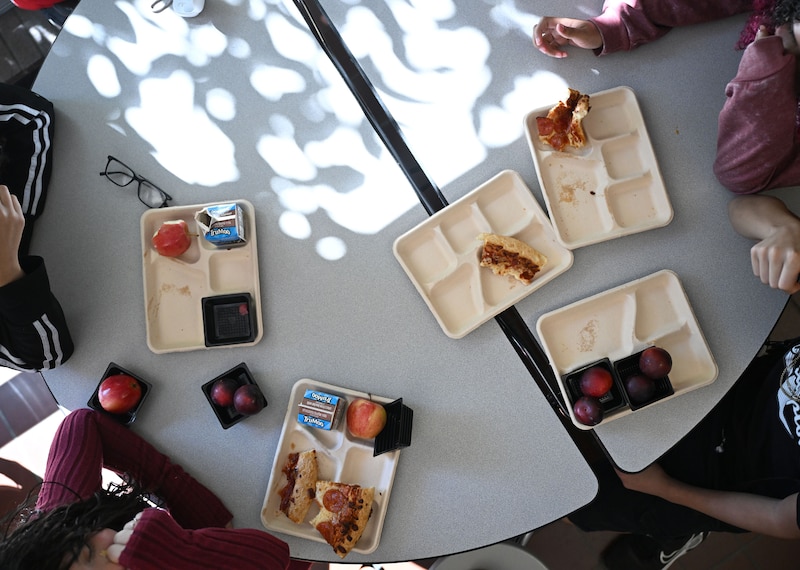
Parents say more options at more schools is better
In Aurora Public Schools, one of the most diverse districts in the state, leaders started incorporating culturally varied meals such as chicken tikka masala, empanadas, and pupusas in 2015. The meals are served at all schools, but the schools always serve at least four or five meal options. The district doesn’t serve certified halal or kosher meals, but tries to offer meals that would naturally be halal such as lentils.
“Someone who is vegetarian or doesn’t eat pork, will always have an option,” said James Lesley, assistant director of support and compliance in nutrition services for Aurora schools. “We know that students want choices. By offering more options, it just helps everyone.”
During COVID, some of the meal options went away because of supply problems with vendors, but the district is working to bring them back. At a recent food show where families voted on new meals, the Aurora district saw that families were particularly excited about the reintroduction of pupusas.
Families also highly rated guacamole and a beverage similar to the Starbucks Pink Drink, but which meets school nutrition standards. The pink drink might be served as a special treat on Valentine’s Day.
In Jeffco, Rubio said that wanting healthier meals for all students is about advocating for students who might not have ideal circumstances at home.
“We pay taxes and schools get the money,” Rubio said. “I believe our kids deserve food that is healthier. Not every parent knows or has the income to send their kids with lunch every day.”
Brisneida Barrueta, who arrived in Colorado from Venezuela in December, is living with her husband and two daughters in Jeffco. Barrueta also participated with the group of parents working on the pilot program after realizing her daughters refused to eat their school lunches.
Barrueta said she struggles with packing school meals every day. Sometimes it’s because the working mom is limited on time. Sometimes it’s because her family doesn’t have a lot of food at home.
“As an immigrant, we don’t always have everything necessary for them to eat,” Barrueta said. “We’ve struggled a lot.”
Barrueta submitted a couple of recipes, and one of them, baked chicken with potatoes, a dish she made at home in Venezuela, is one of the meals being piloted. She said her daughters definitely enjoy that meal, but are still picky about eating some of the other foods. Even when the meal is similar to something they like, she said, it’s prepared in different ways or with different ingredients.
If school meals were healthier and her daughters could eat it, she said, “it would be such a great help.”
Yesenia Robles is a reporter for Chalkbeat Colorado covering K-12 school districts and multilingual education. Contact Yesenia at yrobles@chalkbeat.org .

